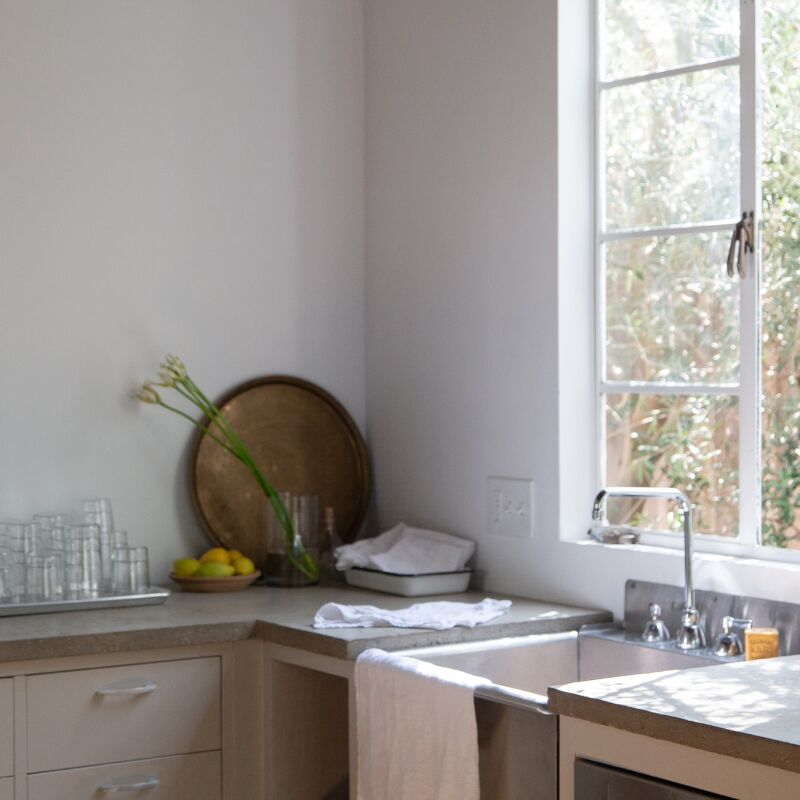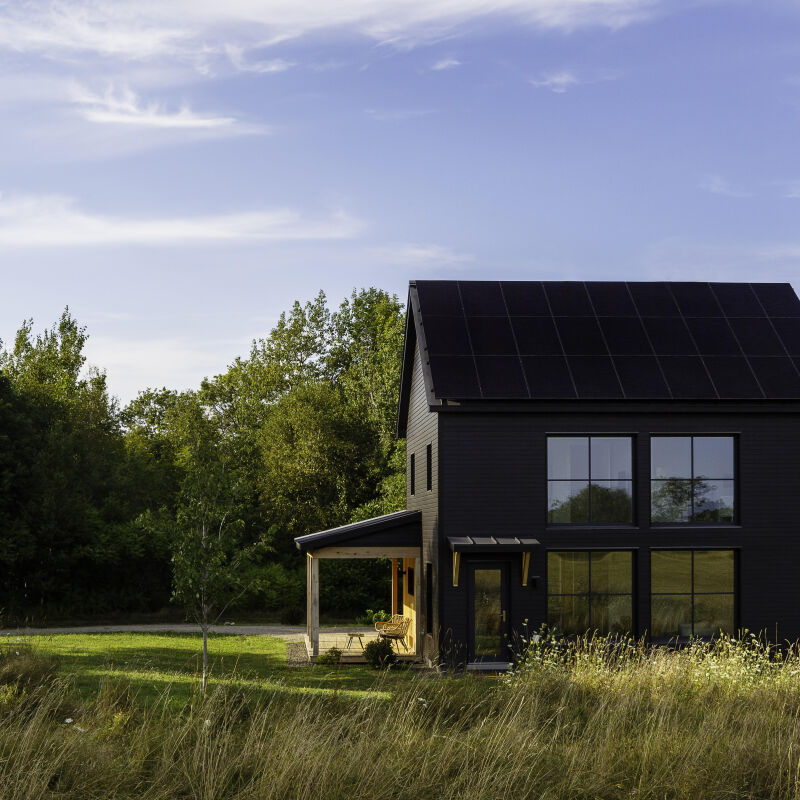Afraid of the dark? It’s time to overcome that fear. One of the secrets to a better night’s sleep is a pitch-black setting. Here’s why, plus a guide to making your bedroom a nighttime light-free zone.

How does darkness affect sleep?
Darkness is the primary cue that tells our bodies it’s time to slumber. Chief controller? The internal clock tucked in our hypothalmus that keeps us on a 24-hour wake/sleep schedule. Light triggers all kinds of internal chemical events, including the production of the sleep-inducing hormone melatonin. According to the National Sleep Foundation, “As evening approaches and the light in our environment dwindles, the hormone melatonin begins to rise and body temperature falls–both of which help us to become less alert and more likely to welcome sleep. With the help of morning light, melatonin levels are low, body temperature begins to rise, and other chemical shifts, such as an uptick in the activating hormone cortisol, occur to help us feel alert and ready for the day.”

Does artificial light count?
Our internal clocks aren’t sensitive only to the rising and setting of the sun. Research shows that artificial light has a major impact on circadian rhythm–our body’s natural 24-hour wake/sleep cycle–and the production of sleep hormones. The thinking part of our brain that differentiates fake light from natural light isn’t able to pass that tip along to the hypothalamus. Scientists at Tulane University studied melatonin production and found that sleeping in rooms with even dim lights caused melatonin levels to drop, affecting not only the ability to fall asleep but also to stay asleep. “In total darkness,” they note, “even if you can’t sleep, your melatonin levels will increase normally.”
A study in the Journal of Clinical Endocrinology & Metabolism concludes that exposure to room light before bedtime “exerts a profound suppressive effect on melatonin levels and shortens the body’s internal representation of night duration. Hence, chronically exposing oneself to electrical lighting in the late evening disrupts melatonin signaling and could therefore potentially impact sleep, thermoregulation, blood pressure, and glucose homeostasis.” Convinced?

How to achieve total darkness in the bedroom:
The first step is to survey your room for interior and exterior sources of artificial and natural light. You may be surprised. Keep a list and take action. Here are some ideas.
1. Dim the lights before bedtime.
Consider using low-wattage incandescent lamps at your bedside (and turn off overhead lights as you get ready for bed). The key is to wind down with lighting at a lower level than normal, signaling to your body that darkness is setting in.

2. Eliminate electronics.
Researchers have found that the circadian rhythm is especially sensitive to light with short wavelengths, in particular the blue light given off by electronics, such as computers and cell phones, and also by energy-efficient fluorescent bulbs. “Blue light preferentially alerts the brain, suppresses the melatonin, and shifts your body clock all at the same time. Your brain is more alert now and thinks it’s daytime because we have evolved to only see bright light during the day,” says Harvard sleep researcher Steven Lockely (via the Chicago Tribune).
What to do with those annoying LED indicator lights on gadgets that can’t leave your room (such as the wireless port plugged into an outlet in my own bedroom)? Discover LED dimming sheets; made by LightDims and others, these plastic dots and strips stick (without adhesive) on top of the indicator light to either black it out or dim it.
3. Avoid fluorescent lights in the bedroom.
Caught in a lightbulb conundrum? See Remodeling 101: Smart Light Bulbs.
4. Forget night lights.
Even dim lighting can suppress melatonin production. If you need a light to guide you for middle-of-the-night peramubulations, consider a motion-activated night light.
“Getting to the bathroom at night is important for some of us. Haven’t we all staggered out of bed, one eye closed, the other cracked open just enough to find our way?” says lighting designer Thomas Paterson, founder of London- and Mexico City-based Lux Populi. “New technologies make it easy to hide a soft light under a bed, a table, or a skirting, softly lighting the floor—and then, thanks to a motion sensor directed away from the bed (so it doesn’t turn on when you move in bed), you have soft light to find your way whenever you get up.”
5. Ditch the digital clock.
The first thing I do when entering a hotel room is unplug or hide the bedside digital clock. At home, consider the good old analog clock. (And if you need to check the time while it’s still dark, consider a clock with an illumination button rather than one that stays lit all night long.)

6. Use blackout shades
Light-blocking shades, blinds, and curtain liners used solo or in tandem keep street lights and car lights out of your bedroom. They also keep early morning light from waking you. It’s best to have window coverings that block the light at night, but can be drawn to bathe the room in sunlight during the day.
Window covering averse like me? Blackout shades don’t need to be black: I use simple blackout roller blinds that blend with white window frames. Blackout Curtain Liner Fabric can also be used as backing on drapes and fabric blinds.
Or, consider a double roller blind: two rollers can accommodate two different fabrics, allowing sheer and blackout options. During the day, sheer blinds filter and diffuse the light coming in; at night, blackout blinds cloak the room in darkness.
For all you need to know about roller blinds, see Christine’s Remodeling 101: Simple Roller Blinds.

7. Use an eye mask

Other sleep-inducing ideas?
Get some sun during the day. Exposing your body to sunlight not only helps alert the brain to produce the activating hormone cortisol but also helps you sleep better at night because it keeps your circadian rhythm on schedule.
Does all this talk of sleep have you thinking about bedrooms? Take a look at our advice on a well-designed (and sleep-inducing) bedroom:
- Expert Advice: Secrets for Better Sleep from Arianna Huffington
- 10 Secrets for a Better Night’s Sleep
- Domestic Dispatches: 7 Secrets for Making the Perfect Bed
- 7 Tips for Creating a Low-Key, Romantic Bedroom with Tricia Rose of Rough Linen
Frequently asked questions
Why is total darkness important for a better night's sleep?
Total darkness is crucial for a better night's sleep because it promotes the production of melatonin, a hormone that regulates sleep-wake cycles. Exposure to light, even small amounts, can suppress melatonin production and disrupt the quality of sleep. Achieving total darkness can help signal the body that it is time to rest and improve sleep quality.
How can I achieve total darkness in the bedroom?
There are several methods to achieve total darkness in the bedroom:
Install blackout curtains or shades: These window coverings have a special lining that blocks out light effectively.
Use blackout blinds or shades: These window treatments have a built-in mechanism to prevent light from entering through the edges or gaps.
Apply blackout window film: This adhesive film can be applied directly to the window glass to block out light.
Seal gaps and cracks: Use weatherstripping or caulk to seal any openings around windows or doors that may allow light to enter.
Cover electronic devices: Turn off or cover any electronic devices in the bedroom that emit light, such as alarm clocks or charging indicators.
Are blackout curtains or shades the best option for achieving total darkness?
Blackout curtains or shades are often considered the most effective option for achieving total darkness. They are designed with a special lining that blocks out light, preventing it from entering the room. It is important to select curtains or shades that are properly sized and installed to ensure maximum light-blocking capability.
Can I achieve total darkness without installing new window treatments?
Yes, there are alternative methods to achieve total darkness without installing new window treatments. You can use sleep masks that cover your eyes and block out light. Additionally, you can try using blackout liners or fabric to cover existing curtains or shades to enhance their light-blocking properties.
Will achieving total darkness make the room too hot?
Achieving total darkness does not necessarily mean the room will become excessively hot. Blackout curtains and shades, while designed to block light, can also provide some insulation and help regulate the room's temperature. If heat is a concern, you can also consider using window treatments with insulating properties or combining blackout solutions with other methods of temperature control, such as fans or air conditioning.
Can I achieve total darkness if I have streetlights or exterior light sources near my bedroom?
Even if you have streetlights or exterior light sources near your bedroom, you can still achieve a significant reduction in light by using blackout curtains, shades, or window film. Additionally, sealing any gaps around windows, using light-blocking liners, and minimizing light-emitting devices in the room can further enhance the darkness. It may be helpful to experiment with different solutions to find the best combination for your specific situation.
Can achieving total darkness help with other sleep-related issues?
Yes, achieving total darkness can help with various sleep-related issues beyond improving sleep quality. It can be particularly beneficial for individuals who work night shifts or have irregular sleep patterns. Total darkness can also aid in reducing insomnia symptoms and improving overall sleep hygiene.




Have a Question or Comment About This Post?
Join the conversation